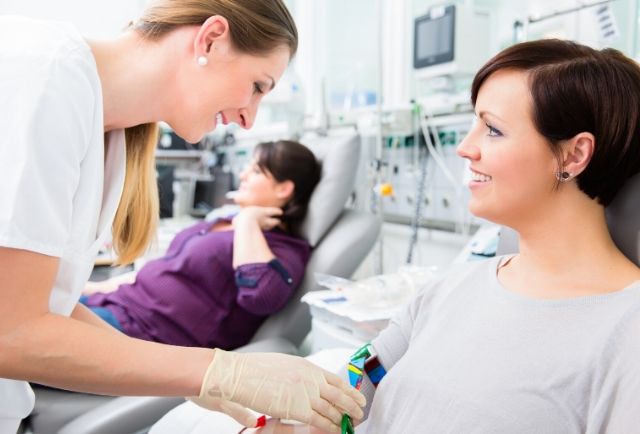The Northeast Medical Institute - New Haven Campus Phlebotomy Course & Cna Class PDFs
The Northeast Medical Institute - New Haven Campus Phlebotomy Course & Cna Class PDFs
Blog Article
Little Known Facts About Northeast Medical Institute - New Haven Campus Phlebotomy Course & Cna Class.
Table of ContentsThings about Northeast Medical Institute - New Haven Campus Phlebotomy Course & Cna ClassThe 8-Minute Rule for Northeast Medical Institute - New Haven Campus Phlebotomy Course & Cna ClassWhat Does Northeast Medical Institute - New Haven Campus Phlebotomy Course & Cna Class Mean?A Biased View of Northeast Medical Institute - New Haven Campus Phlebotomy Course & Cna ClassThe Basic Principles Of Northeast Medical Institute - New Haven Campus Phlebotomy Course & Cna Class Some Known Details About Northeast Medical Institute - New Haven Campus Phlebotomy Course & Cna Class
The usage of such gadgets ought to be gone along with by various other infection avoidance and control practices, and training in their usage.For setups with low resources, cost is a motoring consider purchase of safety-engineered devices - PCT Classes. Where safety-engineered gadgets are not available, competent use of a needle and syringe is acceptable. Unexpected exposure and certain information concerning an occurrence ought to be videotaped in a register. Support solutions should be promoted for those who undertake unexpected direct exposure.
labelling); transport problems; interpretation of results for scientific monitoring. In an outpatient department or facility, give a devoted phlebotomy cubicle containing: a clean surface with 2 chairs (one for the phlebotomist and the various other for the person); a hand clean container with soap, running water and paper towels; alcohol hand rub. In the blood-sampling area for an outpatient division or center, supply a comfortable reclining couch with an arm remainder.
Northeast Medical Institute - New Haven Campus Phlebotomy Course & Cna Class Things To Know Before You Buy
Ensure that the signs for blood sampling are plainly specified, either in a written protocol or in recorded instructions (e.g. in a lab kind). In any way times, comply with the techniques for infection avoidance and control provided in Table 2.2. Infection prevention and control techniques. Gather all the equipment needed for the treatment and place it within secure and simple reach on a tray or cart, guaranteeing that all the things are clearly noticeable.
Where the patient is grown-up and aware, adhere to the steps outlined listed below. Introduce yourself to the client, and ask the client to mention their complete name. Check that the research laboratory form matches the patient's identification (i.e. match the individual's information with the laboratory type, to make certain precise identification). Ask whether the license has allergic reactions, phobias or has ever passed out during previous shots or blood draws.
Make the patient comfy in a supine position (when possible). Place a tidy paper or towel under the client's arm. Talk about the examination to be performed (see Annex F) and obtain spoken approval. The person has a right to decline a test any time before the blood sampling, so it is necessary to make sure that the client has actually comprehended the procedure.
Excitement About Northeast Medical Institute - New Haven Campus Phlebotomy Course & Cna Class
Extend the person's arm and inspect the antecubital fossa or forearm. Find a blood vessel of a good dimension that is noticeable, straight and clear.
DO NOT insert the needle where veins are diverting, since this boosts the opportunity of a haematoma. The vein must show up without applying the tourniquet. Finding the blood vessel will help in determining the right size of needle. Use the tourniquet concerning 45 finger widths above the venepuncture site and re-examine the capillary.
Specimens from main lines lug a risk of contamination or wrong lab examination results. It is appropriate, yet not perfect, to draw blood specimens when first introducing an in-dwelling venous device, prior to linking the cannula to the intravenous liquids.
Northeast Medical Institute - New Haven Campus Phlebotomy Course & Cna Class - An Overview
Permit the location to completely dry. Failure to permit sufficient contact time boosts the danger of contamination. DO NOT touch the cleaned website; in specific, DO NOT put a finger over the capillary to guide the shaft of the revealed needle. It the site is touched, repeat the disinfection. Do venepuncture as adheres to.
Ask the individual to create a clenched fist so the veins are more noticeable. Enter the blood vessel quickly at a 30 degree angle or less, and remain to present the needle along the vein at the simplest angle of entry - PCT Training. Once enough blood has actually been gathered, release the tourniquet prior to withdrawing the needle
Northeast Medical Institute - New Haven Campus Phlebotomy Course & Cna Class - An Overview
Take out the needle carefully and apply gentle pressure to the website with a clean gauze or completely dry cotton-wool ball. Ask the client to hold the gauze or cotton wool in area, with the arm extended and raised. Ask the person NOT to bend the arm, since doing so triggers a haematoma.

Northeast Medical Institute - New Haven Campus Phlebotomy Course & Cna Class for Dummies
Do not push the syringe bettor since additional stress increases the threat of haemolysis. Where feasible, keep televisions in a shelf and move the shelf in the direction of you. Infuse downwards right into the proper coloured stopper. DO NOT get rid of the stopper because it will release the vacuum. If the example tube does not have a rubber stopper, inject incredibly gradually into the tube as minimizing the pressure and rate used to move the specimen lowers the threat of haemolysis.

Report this page